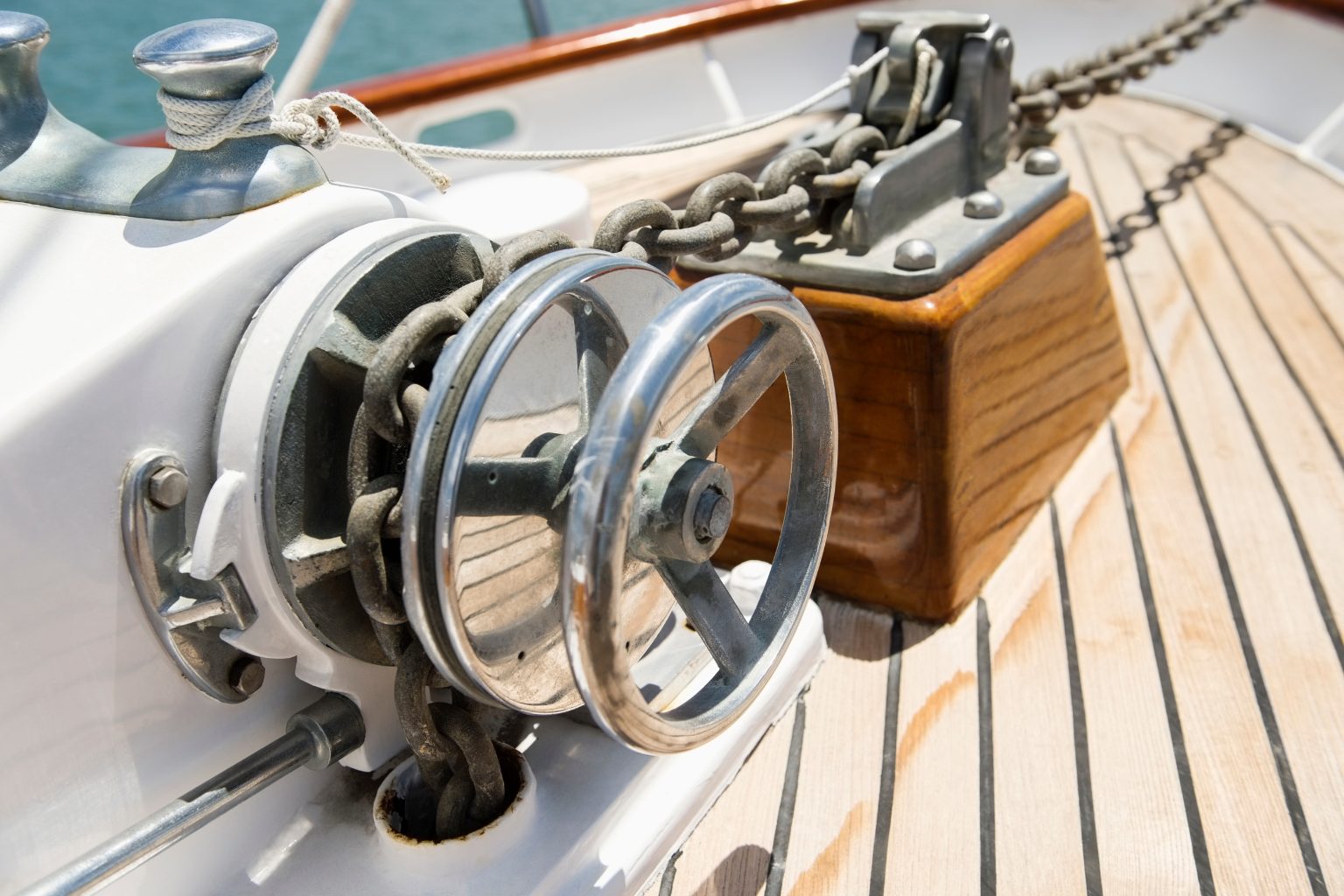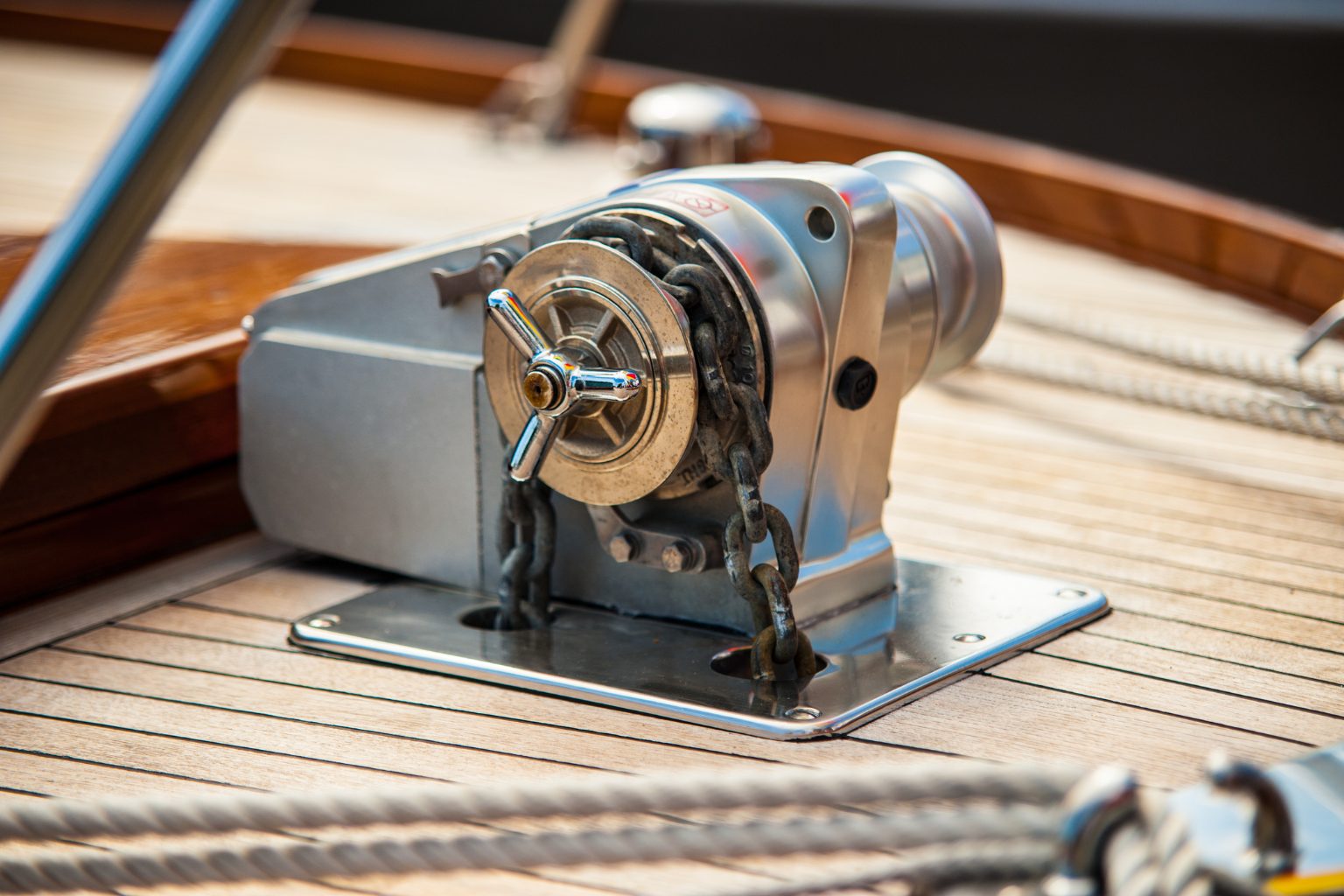An anchor winch can make your time in the water safer and more efficient, yet there is a wide variation among available types. Hence, it can be difficult for the boat owners to choose the best type. Well, it depends on your requirements. So, we have prepared this guide to help boat owners understand the types of anchor winches and how to choose one.

Types of Boat Anchor Winch
Winches are crucial mechanical devices used on ships for reliable anchoring, mooring, towing, and lifting heavy objects. Their design differs depending on their application, size, and type of vessel. For example, recreational boats may benefit from electric winches while larger commercial or offshore vessels often require hydraulic models for increased power and endurance.
The type of marine anchor winch used on any vessel depends on several factors, including load capacity, power source, durability, etc. Selecting the best marine anchor winch will improve stability, safety, and efficiency on board the vessel. Here is a complete guide to choose the right pitch of the propeller.

Electric Winches
When activated, these gears slow the rotational speed of its drum so the cable or rope can tightly wrap around it for improved lifting capacity. Hence, it creates more torque than its input energy alone could produce.
Electric winches use an electric motor to operate their drum and unwind or retrieve anchors. It is popular among recreational boaters and yachts because they require less maintenance and do not rely on hydraulic fluid to function. Installing a marine solar panel may help lower the amount of power consumed by your winch.
You could also consider purchasing an additional battery dedicated specifically to anchor winches. Quick anchor winches offer various sizes, rod capacities, motor powers, and additional components that ensure there will be one suitable for your vessel.
Hydraulic Winches
Marine hydraulic winches provide the force required to deploy and retrieve anchors. These winches use pressurized hydraulic fluid to generate the force needed for operation, enabling operators to control pull strength and line speed with precision.
Marine hydraulic systems require periodic maintenance checks for leaks and wear to remain operational. This can be a problem when you don’t have any tools for maintenance. Hence, electric winches win against the hydraulic ones.
Horizontal Windlass
Horizontal winches resemble vertical winches with one key distinction: their capstan and gypsy are located above deck instead of beneath, making the system more streamlined and suitable for ships with limited space.
Horizontal windlasses work much like other anchor winch types by employing a motor to turn a drum or gypsy that grips and handles the chain. To work properly, the material and link size must match up perfectly with what can be grabbed by the gypsy.
Horizontal winches are less vulnerable to jamming and slipping than their vertical counterparts. Why? Because they don’t require as much rope. Hence, they are much easier to operate and can handle greater loads as compared to the vertical counterparts.

Vertical Windlass
These use a motor to turn a vertical shaft that connects with a gypsy wheel that grips the chain to raise or lower anchors. Their vertical alignment saves deck space while improving chain handling and decreasing wear on the chainwheel.
When purchasing a vertical windlass, you should consider both the size and weight of your ground tackle (anchor + rode). Plus, take note of your anchor’s maximum load rating, the electrical system’s power capacity, and ensure compatibility with your boat’s deck layout and anchoring equipment. Here’s a complete guide to change the propeller of the boat.
Choosing a Boat Anchor Winch: Key Considerations
For safety and operational purposes, choosing the right boat anchor winch is important for boat owners. It must reliably lift and reel in the full anchor rode in real sea states while fitting with the deck layout requirements and meeting safety regulations. Here are some factors that you must consider:

Boat Size & Displacement
Finding an anchor winch that meets your boat’s size and displacement requirements starts with understanding its dimensions. Once you’ve got this, consider other aspects such as rod size, locker capacity, and how it will operate.
Vertical winches are mounted to the deck and require space under for the motor, gearbox, and chain/rode box. So, choose a winch that is ideal for boats with limited spaces, which may need modification in some instances.
Anchor Weight & Type
An anchor’s weight is one factor when selecting a suitable winch, but not the only one; bottom size and wind force also impact displacement. A lighter “lunch hook” might do for short anchorages in calm waters, but more weight may be necessary when anchoring your boat during gale-force winds.
Vertical winches utilize a drum to store line or chain and are an attractive solution for smaller boats due to requiring no deep anchor locker and minimal installation requirements. They’re also able to support higher loads than horizontal winches of similar power; typically paired with chain stoppers.
Power Source & Additional Components
No matter what kind of boat anchor, winch, or capstan you need, its power source should always be considered carefully. Marine winches come equipped with electric, hydraulic, or diesel engines; depending on your boat’s infrastructure and anchoring needs, one may be more suitable than others.
Some winches offer innovative features, such as rope spooling devices, warping heads, and tension measurement systems that may come in handy in specific applications.
Deck Layout & Space
Many anchor winches are installed on the deck’s top, which may not be ideal for every boat. Unlike windlasses that can be hidden away within an anchor locker, vertical winches require quite a bit of topside space. If you choose this, make sure that there is ample clearance and cable access back into a chain locker, ensuring a smooth and efficient anchoring experience.

Conclusion
Selecting the right boat anchor winch is about safety, reliability, and control on the water. The right winch makes anchoring faster, safer, and far less stressful, especially in challenging sea states. Always consider key factors like your boat’s displacement, anchor weight, deck space, and power source before making a final choice. Remember, investing in a quality winch means less wear on your equipment and more peace of mind when you drop anchor.
Upgrade Your Performance with Prop Depot’s Propellers
When it comes to maximizing your boat’s performance, your boat propeller plays just as big a role as your anchor winch. That’s where Prop Depot comes in. Our aluminum boat propeller is made from marine-grade materials that resist corrosion and perform under high loads. With advanced blade geometry and perfectly balanced designs, you’ll experience faster acceleration, better control, and quieter operation. Contact us now!
